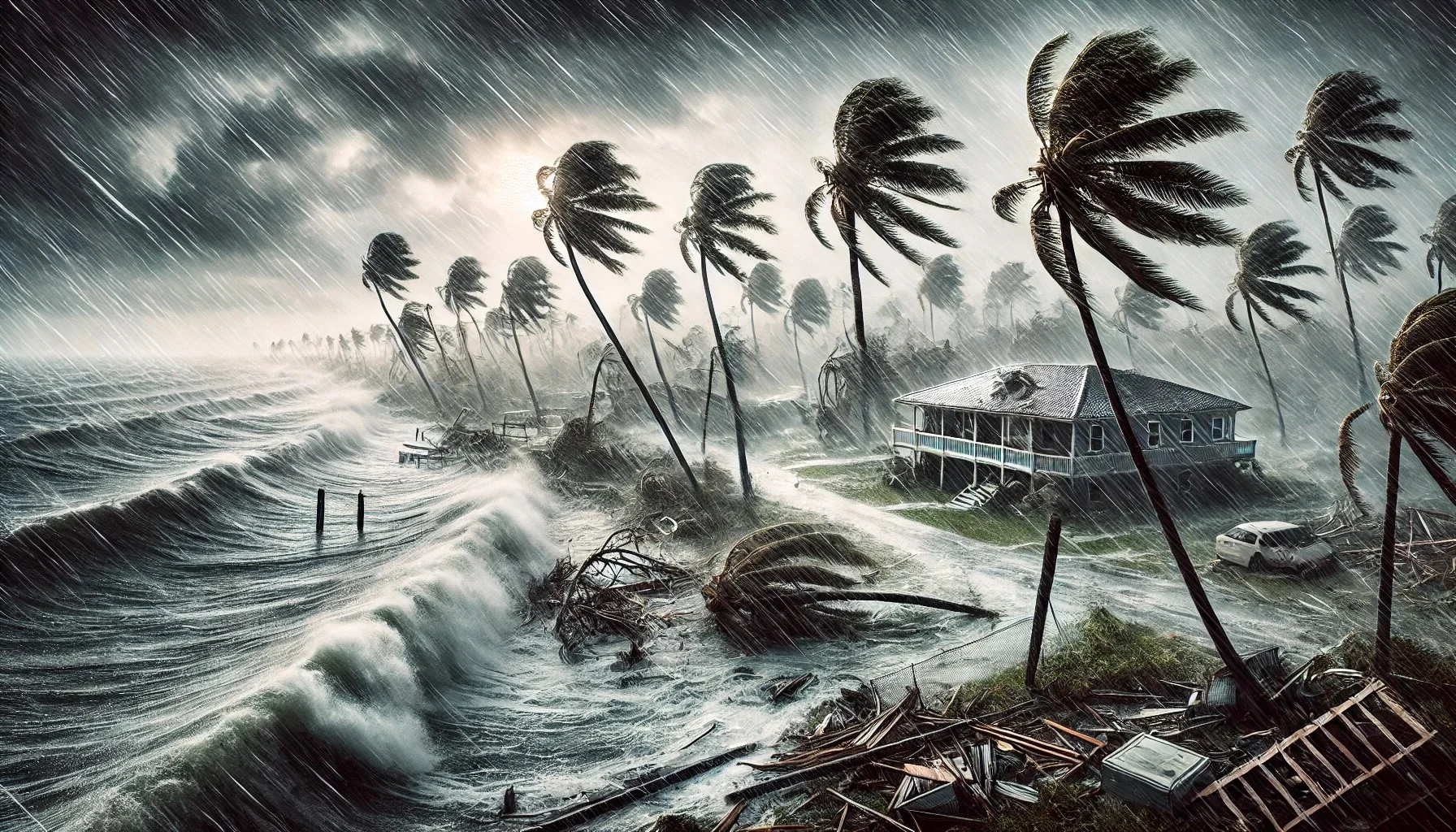
Hurricane Irma
by: The Calamity Calendar Team
September 10, 2017
A Storm is Born
In late August 2017, the Atlantic Ocean stirred with activity, signaling the birth of what would become Hurricane Irma. Forming near the Cape Verde Islands on August 30, Irma intensified rapidly as it moved westward, gaining strength in the warm waters of the Atlantic. By early September, meteorologists were sounding alarms. Irma was no ordinary storm—it had escalated to a Category 5 hurricane, the strongest possible classification, with sustained winds of 185 mph.
As Irma barreled toward the Caribbean, its path of destruction was clear. Its strength set records, with sustained winds at that speed for an unprecedented 37 hours. Island nations braced for impact, but many would not be prepared for the sheer force that was coming their way.
The Caribbean Wrecked
On September 6, Irma made its first landfall on Barbuda, a small island in the eastern Caribbean. The devastation was instant and overwhelming—Barbuda was left "barely habitable." The storm continued on, carving a path of destruction through Saint Barthélemy, Saint Martin, and the British Virgin Islands. Homes were leveled, trees snapped like twigs, and entire communities were left in ruins.
Irma's path wasn't done. The storm lashed the northern coast of Puerto Rico, the Dominican Republic, and Haiti, while also skirting Cuba, where towns along the northern shore were inundated by storm surges. Across the Caribbean, millions were left without power, and many found themselves homeless in the wake of this terrifying natural force.
Irma's Florida Landfall
After wreaking havoc in the Caribbean, Irma turned its full attention to the southeastern U.S., with Florida directly in its crosshairs. By September 10, the storm had weakened slightly but was still an incredibly powerful Category 4 hurricane. The Florida Keys were the first to face Irma's fury, with the hurricane making landfall near Cudjoe Key with 130 mph winds. Massive storm surges flooded coastal towns, knocking out power and flattening homes.
Irma didn’t stop there. Hours later, it made a second landfall on Marco Island on Florida's Gulf Coast, bringing widespread destruction. The storm’s immense size meant that almost the entire state felt its wrath. With torrential rain, high winds, and storm surges, cities like Miami, Naples, and Jacksonville were flooded, with roadways submerged and debris scattered throughout neighborhoods. As Irma moved inland, it slowly lost strength but left a trail of destruction in its wake.
Thanks for subscribing!
A Trail of Destruction and Recovery
When the skies cleared, the scale of Irma's devastation became painfully clear. Nearly 6.5 million Floridians were left without power, and entire communities, particularly in the Florida Keys, were unrecognizable. The storm caused an estimated $77 billion in damage, making it one of the costliest hurricanes in U.S. history.
But the human toll was even more sobering. The hurricane claimed at least 134 lives, including 92 in the United States alone. Some deaths were caused by storm surge and flooding, while others occurred during evacuations or in the aftermath, when people were left without electricity, air conditioning, or medical care.
Recovery efforts began almost immediately. First responders, local governments, and federal agencies like FEMA were deployed to provide aid. Florida conducted one of the largest evacuations in U.S. history, with more than 6 million people leaving their homes. Though many returned to find them intact, others weren’t so lucky. Some areas took weeks or even months to restore power, and rebuilding efforts in the hardest-hit places stretched on for years.
Lessons Learned
Irma's immense power and path of destruction prompted serious discussions about disaster preparedness, climate resilience, and infrastructure improvements. Florida and other hurricane-prone regions have since strengthened building codes and updated evacuation protocols to better handle future storms. Irma also underscored the importance of coordinated emergency response, as federal and state agencies worked together to prevent further loss of life.
For the Caribbean, recovery has been slow and painful, particularly for smaller islands like Barbuda, which was almost entirely destroyed. Many of these communities continue to rebuild, years after Irma left its mark.
A Storm to Remember
Hurricane Irma will be remembered as one of the most ferocious storms to ever hit the Atlantic, a powerful reminder of nature's unpredictability. For those who lived through it, the memories of howling winds, rising waters, and the long road to recovery are vivid and haunting. The storm has forever changed the way we prepare for natural disasters, as communities brace for the increasing likelihood of more hurricanes of Irma's magnitude.
As climate change fuels the debate about future hurricanes, Irma stands as a harrowing benchmark. It is a stark example of what happens when nature's fury collides with human civilization.
Stay in the Loop!
Become a Calamity Insider and get exclusive Calamity Calendar updates delivered straight to your inbox.
Thanks! You're now subscribed.